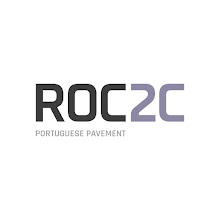This fantastic work is one of the most beautiful pavements made in “Calçada Portuguesa” - Rainha Santa Isabel: Isabel de Aragão, The University of Coimbra
This fantastic work is one of the most beautiful pavements made in “Calçada Portuguesa”, known and photographed by everyone visiting Coimbra.
Rainha Santa Isabel: Isabel de Aragão, Queen of Portugal, b. Saragoça, 1271 07 04 – d. Estremoz, 1336 07 04.
Daughter of Peter III, of Aragon, and Constance of Hohenstaufen, princess of Sicily, she is remembered in history for her kindness with children and her love for the poor. Aged 12, she married King Diniz, of Portugal, in 1282 02 11, and reined until her death, in1336.
She is mostly known for the episode of “The Miracle of the Roses”: According to the legend the Queen left the Castle, at “Sabugal” in a winter morning carrying loafs of bread in her lap to give to the poor. While making her offerings, she was interrupted by her husband, King Diniz, known to be quite severe with her generosity. He stopped her and asked: “My Lady, what are you carrying in your lap? To which she replied: “I carry roses my Lord”. The King came back at her and asked: “Roses in January ???”, She then opened her lap and, by miracle, dozens of roses fell on the floor !
The University of Coimbra, is one of the most ancient universities in the World. It was created on the 1st of March, 1290, when King Diniz, signed the document “Scientiae thesaurus mirabilis”, founding the institution and requesting its confirmation to the Pope.
It houses several of the most beautiful and extensive libraries in the world, founded in February 12, 1513. The most famous one is the “Joanina” Library with over 80.000 volumes.
This gate called “Porta Férrea” is the main and noble entrance of the University.
Rainha Santa Isabel: Isabel de Aragão, Queen of Portugal, b. Saragoça, 1271 07 04 – d. Estremoz, 1336 07 04.
Daughter of Peter III, of Aragon, and Constance of Hohenstaufen, princess of Sicily, she is remembered in history for her kindness with children and her love for the poor. Aged 12, she married King Diniz, of Portugal, in 1282 02 11, and reined until her death, in1336.
She is mostly known for the episode of “The Miracle of the Roses”: According to the legend the Queen left the Castle, at “Sabugal” in a winter morning carrying loafs of bread in her lap to give to the poor. While making her offerings, she was interrupted by her husband, King Diniz, known to be quite severe with her generosity. He stopped her and asked: “My Lady, what are you carrying in your lap? To which she replied: “I carry roses my Lord”. The King came back at her and asked: “Roses in January ???”, She then opened her lap and, by miracle, dozens of roses fell on the floor !
Porta Férrea
The University of Coimbra, is one of the most ancient universities in the World. It was created on the 1st of March, 1290, when King Diniz, signed the document “Scientiae thesaurus mirabilis”, founding the institution and requesting its confirmation to the Pope.
It houses several of the most beautiful and extensive libraries in the world, founded in February 12, 1513. The most famous one is the “Joanina” Library with over 80.000 volumes.
This gate called “Porta Férrea” is the main and noble entrance of the University.
Photos: Celso Gonçalves Roc2c




Comentários
Enviar um comentário